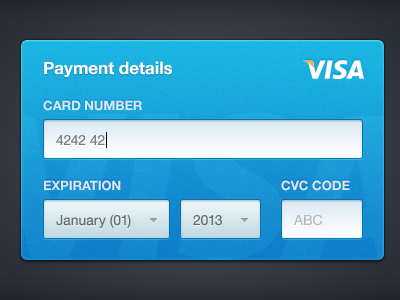The check out or payment process in an application is critical and has to perform smoothly to make the inexperienced users feel that they fill in forms correct. I’ve seen numerous of examples where user pick up a credit card and try to read the form and what goes where. Experienced user doesn’t have this problem since they’ve done this a lot and find the credit card number, valid date, name and CVC code. But to help inexperienced users I could implement a skeuomorphic GUI-design to overcome that problem and make them visually understand what goes where. I’m afraid that experienced user might not trust a payment process looking too close to the real world. This sums up to what are the pros and cons of skeuomorphic design in payment transactions?
A usual payment form looks like this:

download bmml source – Wireframes created with Balsamiq Mockups
The skeuomorphic equivalent form would look something like this:


